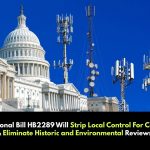
Last year, the global chemical giant Bayer agreed to pay
$650 million to settle the claims of 2,500 cities, counties, and ports for cleanup of contamination from polychlorinated biphenyls, or PCBs, a notorious group of chlorinated chemicals that have long been linked to cancer and reproductive and immune system harms.
Just last month,
the state of Delaware sued Monsanto for “long-lasting damage” to the state’s natural resources from PCBs dumped in the state. The catch? Congress banned PCBs 45 years ago. In the chemical marketplace, PCBs have been dead for decades. PCBs aren’t the only chemical ghosts lurking in our waters.
When we drink polluted water or eat contaminated fish, game, or crops, these chemicals can haunt us, too, building up in our fat, tissues, blood, and organs. In pregnant people, the chemicals can cross the placental barrier, polluting the developing fetus long before birth.
Our ongoing struggle to clean up PCBs more than 40 years after they were banned exposes the limited effectiveness of banning chemicals that do not go away.
It also underscores the weaknesses in our chemical regulatory system, which tends to assume that chemicals are safe until proven otherwise. That assumption has allowed manufacturers to dump chemicals with impunity until hazards come to light, with little regard for the lives and ecosystems harmed along the way.
Even once the risks are revealed, it can take decades for the EPA to institute regulations—if it does so at all.
Decades of PFAS contamination
In 2016, Congress enacted sweeping reforms of the EPA’s chemical approval process. But the goals of the new law were undermined by the Trump administration’s EPA, which often approved new chemicals without receiving adequate health and safety data, in a secretive process.
Whistleblowers recently reported intense pressure to falsify reports to make new chemicals appear safer and quickly approve them for use in commerce.The ongoing struggle to clean up PCBs also foreshadows a looming crisis from per- and polyfluoroalkyl substances, or PFAS, contamination. PFAS are so persistent that they are often referred to as “forever chemicals.” They are linked to serious maladies including increased risks of kidney and testicular cancer, thyroid harms, ulcerative colitis, reproductive and developmental harms, and reduced effectiveness of vaccines.
There is a truly staggering amount of PFAS contamination in the U.S. The Environmental Working Group has mapped more than 2,800 contaminated sites and identified nearly 30,000 additional potential sites. The financial, medical, and environmental costs to address PFAS will almost certainly dwarf those related to lingering PCB contamination.
PCBs were widely used for 30 to 40 years, beginning in the 1930s and 1940s. PFAS chemicals came on the market around the same time, but unlike PCBs, they were never banned and to this day have minimal regulations.
As such, they’ve been contaminating water, food, and consumer products for more than 70 years.
Regulating PFAS chemicals
And there are hundreds, if not thousands, of PFAS chemicals that are still commercially available and widely used. The EPA estimates that the class of PCBs constitutes more than 200 individual substances. By contrast, the agency has identified more than 9,000 PFAS-related compounds, with an estimated 1,000 still in use.
Recent peer-reviewed research has found that PFAS chemicals have more than 200 categories of use. Just as we are working to mitigate the effects of climate change on future generations, we must do the same to save future generations from the chemicals in use today that will outlive us. Congress and the EPA must act quickly to address the PFAS crisis.
Specifically, the EPA should act to limit discharges of PFAS under the Clean Air Act and Clean Water Act. It should designate PFAS as “hazardous substances” under Superfund legislation and set protective limits under the Safe Drinking Water Act. Non-essential uses of toxic and persistent chemicals should be banned. Congress should also appropriate adequate funding for drinking water treatment and cleanup.
The EPA also needs to do a better job preventing contamination from persistent chemicals in the first place. The EPA must act as the laws passed by Congress require: closely scrutinize new chemicals, demand safety data if it’s lacking, and restrict new chemical uses as needed to protect public health and the environment.
We owe this much to future generations, who do not deserve to be haunted by today’s short-sighted decisions about chemical safety.
Melanie Benesh is a legislative attorney for the Environmental Working Group.





